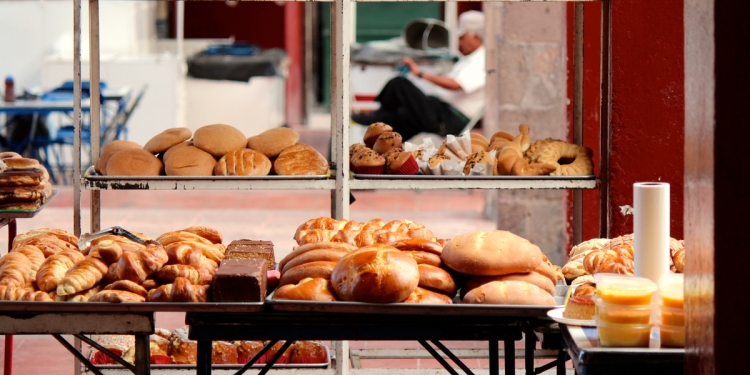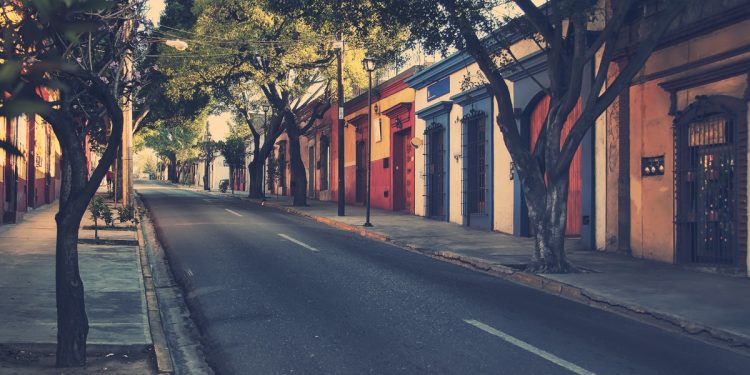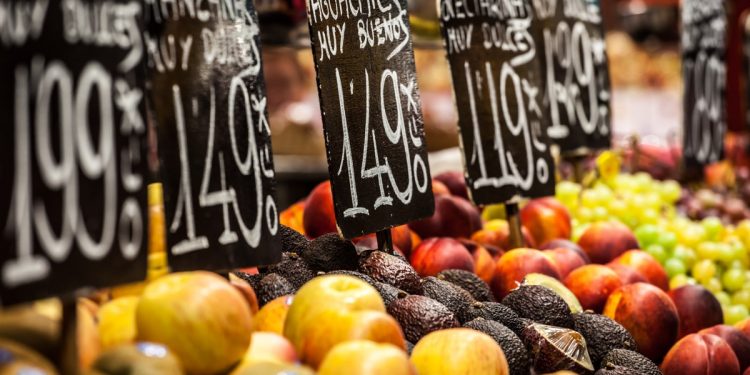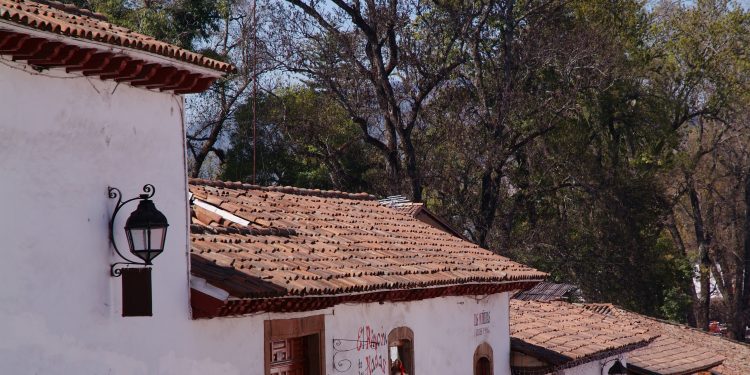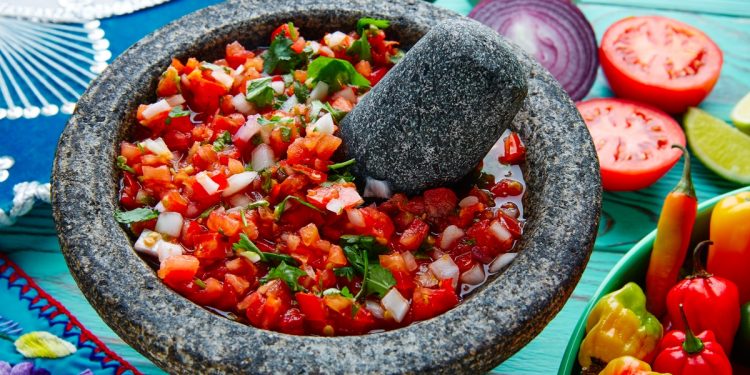An important part of Mexico’s past and present are its bread shops, which are found on many busy corners of its towns and cities. When you’re hungry, there’s nothing quite as enticing as the smell of fresh baked bread wafting out from the local panadería.
Wide assortment of sweet and savory bread
It’s not unusual in the evenings to see people hanging around inside the shop, metal tray and tongs in hand, waiting for the next batch of hot rolls —oval-shaped bolillos or flat teleras— to be wheeled out from the ovens and tossed into the bins.
Then there are the shelves organized with a large variety of pan dulce —sweet bread— each piece with its own particular name. Among the most popular are chocolate or vanilla coated conchas (shells), the sugar-covered bigotes (moustaches) or moños (bows), the plain mantecadas (cup cakes), ear-shaped pastries called orejas (ears), and the inevitable cuernos (croissants).
Then there are the crumbly cookies called polvorones (in various colors), the long, glazed pastries known as banderillas, and chinos, largish splodges of cake baked in wads of thick grease-proof paper, usually sprinkled with small pieces of walnut.
Bread shop scenes of a bygone era
In an era gone-by, the local panadería would often be the focal point of a bustling street corner, and in more innocent times than these, an evening meeting place for young lovers, particularly among the working classes. This was so common that the expression “¿a qué horas vas al pan?” (What time are you going for bread?) became a joke as a chat-up line.
Seldom lacking outside would be the vendor of tamales —sweet or savory corn dough served in a natural leaf wrapper— from a steaming pot settled into the front of a large tricycle; and not far away the wheeled oven-cart loaded with camotes (yams) and baked bananas would come trundling by, announcing its imminent arrival with an ear-piercing screech from a steam whistle mounted on the mobile stove, accompanied by the reassuring smoky odor from the smoldering charcoal embers inside.
A common and natural next-door neighbor to the bread shop is the grocery store —tienda de abarrotes— selling cold cuts, canned foods, soft drinks and liquor, and some have installed a rosticería: a roast chicken stand mesmerizing customers as they wait and watch inordinate amounts of grease drip from anemic-looking fowl going round and round on a spit.
Contemporary bakery stores in Mexico
Some of these scenes have been replaced over the years by the proliferation of multi-purpose supermarkets with their own in-house bakeries, particularly in the cities. The fancier stores like CityMarket and offer a wide variety of sweet and savory breads baked throughout the day.
Many of the old traditional corner street bread shops have closed, or their quality has gone downhill. Some are unable to compete with the variety of fancy doughnuts, and the slick presentations, or the price advantages of buying in bulk enjoyed by the large chains and many, if not most of the them, have lost their charm.
In their place, a new generation of specialist bread shops, in the form of small independent bakers, or larger chains like Esperanza, have emerged and thrive filling the never-ending demand for sweet and savory bread.
Mexico in your inbox
Our free newsletter about Mexico brings you a monthly round-up of recently published stories and opportunities, as well as gems from our archives.

